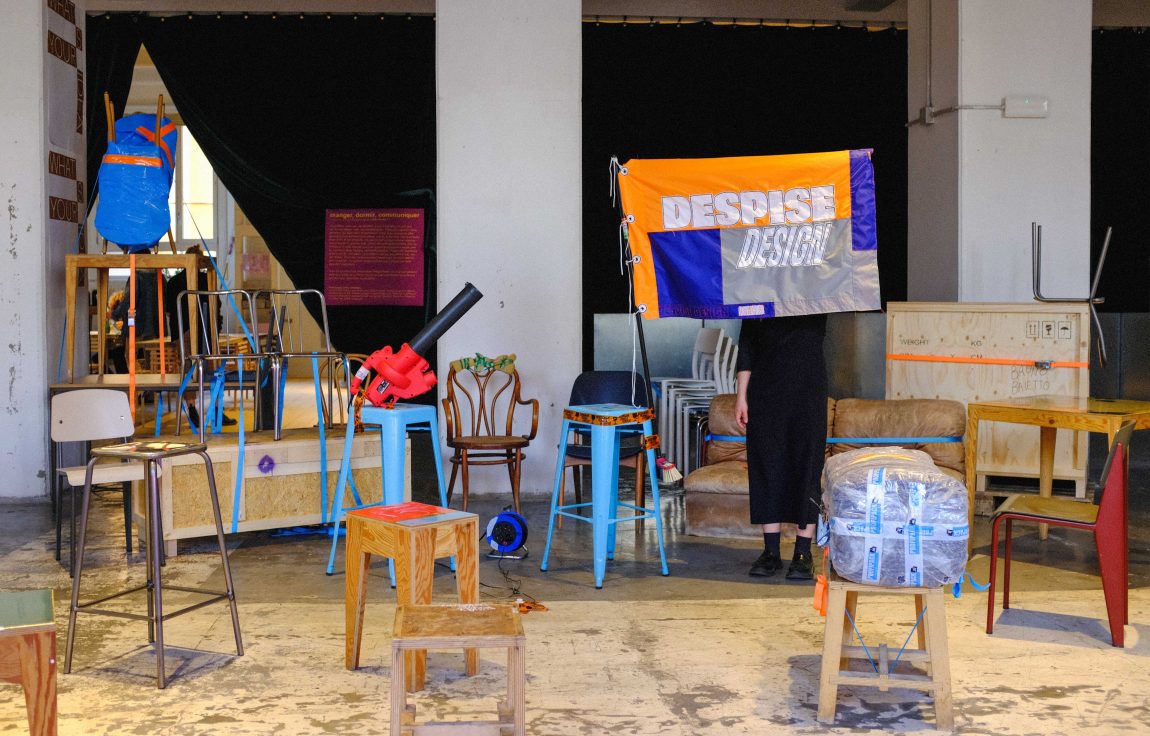Onomatopee was part of Milan Design Week 2023 with the exhibition Design in Conversation: thinking - knowing - making and supporting the collective project Despise Design in a series of talks and interviews about design fairs. Onomatopee was invited by BASE for the We Will Design program where ideas for inclusivity, diversity, equality, and accessibility were explored and discussed by independent designers, design schools, duos, and collectives.
DESIGN IN CONVERSATION
Design in Conversation aims to explore the role of designers through their design practice and how knowledge becomes tangible and accessible through their making. What should a designer know? is the question 5 designers were asked to answer: 5 projects were presented to embody the process through which their authors think and know - and, eventually, work - and question the unquestionable truths of the design discipline. This exhibition was inspired by the book Designerly Ways of Knowing: a working inventory of things a designer should know by Danah Abdulla, published by Onomatopee.
The five designers thus told (or re-told) those stories that became the cultural background and know-how of their formal and material research. Doing so enables us to get to know authentic techniques in the making, neglected and inconvenient narratives as well as enriching collaborations.
Following the intentions of Danah Abdulla, who in her book invites anyone to add their contribution to the inventory, each project was conceived as the necessary continuation of this list, starting with number 241.
241. La Historia del Equipal
by Ramón Jiménez Cárdenas (Mexico)
The equipal could be considered the first chair with modernist ergonomics to be made in the Americas, but before the equipal there was the petate, the object where this sentence is written on. You would sit, eat, sleep, gather, make love, give birth, and die on a petate. Europeans however demanded a strict separation between their bodies and the dirt floor, so they produced equipales. They would become the first material metaphor of a hierarchy between man and the ground. The sentence “La Historia del Equipal” is written using plumón, a textile technique consisting of twisting a thread while enclosing dyed duck feathers. Through the history of craft, the object narrates the colonial possession of land, species, and ergonomics.
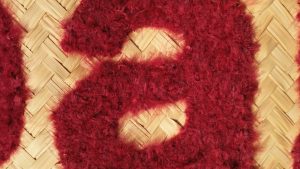
242. How bark beetles eat
243.Why roses have prickles
by Lisa Ertel Jannis Zell (Germany)
“I ate myself through soft walls of summers and hard walls of winters, leaving my signature unintendedly. Now leaving my home, crawling through a bright-lit space, mumbling and chatting, chunks of rubber squeaking on the smooth and shiny floor. Further up through these broad canyons, abandoned houses, another family tree of someone else. I reached the top and found myself climbing on a small branch. I saw humans use those to hit little metal heads into the walls of their homes. It had cold and spikey hills. I reach the top.”
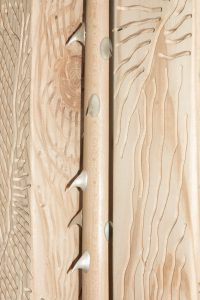
- That designer and creation are continuously shaping one another
by Flora Lechner (Austria)
“Lift me up” is a sculptural weight-lifting machine designed to highlight the need for self- expression in the design practice itself. It shows a play of balance between the designer’s ego, idea, choice of materiality, and craft. Each part of the machine is physically and mentally shaped by the designer and this in turn shapes them back. The weight-lifting machine documents its creation and thus transforms the designer’s idea into the final product. Showcasing each step of the creation process to the desired form, the weight-lifting bar becomes an archive, a timeline of the production itself.
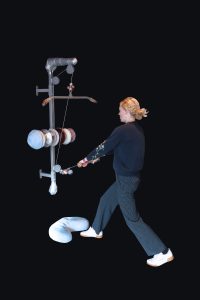
- How design mediates our perception of value and why we should reconsider it
by Bruno Baietto (Uruguay)
Design defines the materiality of what is valuable or not, especially when it’s in contrast to what is designed to be discarded. Classic materials such as marble, wood, ceramics, and glass are long-lasting; they are used to support Western social values, becoming signifiers of commerce, power, and class. By challenging the perception of what is valuable (or not) according to how materials take shape by design, cardboard, and tape nudge the shape of furniture, outlining the materiality we left behind.

- Question Closely
by Eleonora Toniolo (Italy)
What does it mean to be a designer? Question Closely is a game to collectively reflect on the role of the designer, combining prompts inspired by simple protocols. Wearing one of these scarves, participants are invited to play the Design Enthusiast, positive toward the power of designers; the Cynic, disillusioned about what the discipline can actually achieve; or the Uncertain, gently doubting both positions, unsure where to stand. This role-play invites discussion by helping us to broaden our understanding of design by listening to different voices and perspectives.
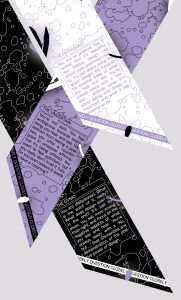
DESPISE DESIGN
Despise Design is a design collective based in the Netherlands, running a project-based initiative to address the validity of design fairs and their conditions. For this year's Fuorisalone, the ongoing 'Despise design, all bless the fair!' research took the shape of group discussions, interviews, and installations with headquarters in BASE. Among the speakers were Giovanna Castiglioni, curator of the Achille Castiglioni’s Studio Museum, Roberto Boni, freelance architect and professor at Politecnico di Milano, and Richard Hutten, one of the most influential and successful Dutch designers, well known for his graduation project No sign of Design.
<< The presentation of Despise Design at BASE Milano during the Milan Design Week was a valuable opportunity for the collective to expand upon the topics that are central to their inquiries within a public forum and series of discussions.
Taking place over the course of four days, the collective performed a wrapping and unwrapping of designed objects such as chairs, crates and tables from the storage rooms of BASE, and in doing so presented the often hidden aspects of design fairs (the labour and logistics of preparation and presentation).
Within this performance, the objects defined a stage upon which interviews and talks took place. These talks charted a journey of experiences of designers taking part in design fairs such as Fuorisalone and Salone del Mobile, each responding to a central question; “How did we get here?”
Hopes and Dreams
The first talk addressed Hopes and Dreams, the perception of design fairs and celebrations of design prior to attendance. Held in Italian, with invited guests Giovanna Castiglioni and Roberto Boni, the talk unpacked the ‘dream’ of design, and exposed the changing landscape of design practice marked out by what might be a generational shift in the dreams of design in the past and the present.
Negativity, Refusal and Emotional Damage
The second talk, entitled Negativity, Refusal and Emotional Damage, welcomed Richard Hutten to BASE, to discuss the means of persevering within the design field. The discussion brought together the seemingly separate worlds of industrial manufacturing and governmental support for the creative industries, teasing at the changes that design has undergone since the last design movements of the 1960s and 1990s. Shared goals in sustainability, agency, and the power to change systems emerged, while the stark differences in design practices and the role of design/designers over generations was laid bare.
Huddled Together Like Sheep
The final discussion was held exclusively for the designers working in BASE over the course of Milan Design Week. Entitled Huddled Together Like Sheep, the talk aimed to create a space for community to gather, and a place for discussing the experiences that this group of designers were having in Milan. Collectively, the group discussed ideas of collectivity and the challenges of design practice brought on by design fairs.
All of these talks were recorded plus impromptu discussions with guests who passed by the stage were recorded as well. The microphones and soundboard provided by Onomatopee were key in allowing these recordings to take place.
These discussions were supplemented by a range of recorded interviews that were taken inside and outside of BASE during the week. The results of the research that was done with the support of Onomatopee at BASE, as well as the group meetings and talks conducted before the presentation remain as an archive which will form the basis of future developments in Despise Design.
Signed,
Despise Design, 2023 >>

